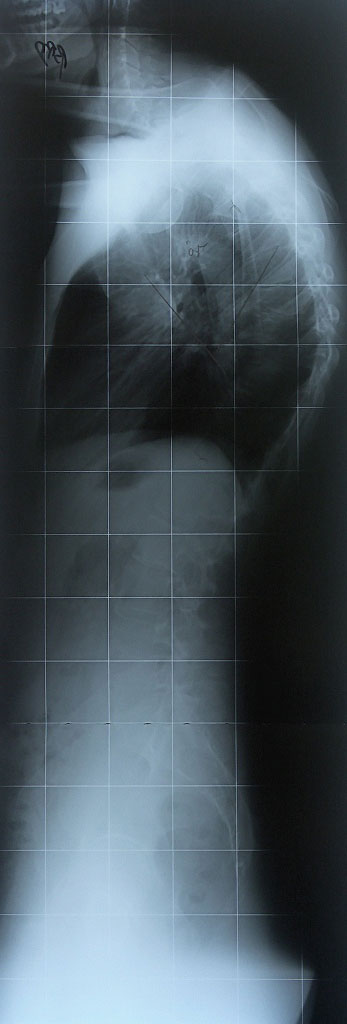Update: 23 November 2024
Corrective PhysEd
Corrective PhysEd identifies and corrects the musculoskeletal imbalances that can cause physical dysfunction and pain. Once biomechanics are "corrected," related pain symptoms typically resolve without the need for medical intervention.
Corrective PhysEd Program
The Corrective PhysEd Program includes:
- Comprehensive assessment of musculoskeletal structure and function (approx. 2-hours).
- Custom corrective program design (exercises and stretches you can do at home).
Corrective PhysEd Program Fee: $300
- Corrective Phys-Ed Program Application Forms
NOTE: Additional costs include minimal, inexpensive fitness equipment. For example, an exercise mat, swiss-ball, foam roll, etc. (it depends on what you need). Personal exercise training sessions are required and last 60-90 minutes ($60/hr). We recommend two to three sessions with the trainer. The exercises are simple, but to ensure that you perform them correctly, initial training is necessary. Properly performed, you will gain the most benefit and prevent harm.
How we correct musculoskeletal imbalances.
- Loosen muscles and tendons that are too tight.
- Tighten muscles and tendons that are too loose.
- Strengthen pathologic functional weaknesses.

Functional Core
-
Moving in the way that our bodies are genetically designed to move (safely and with the least amount of effort expended) requires a strong, functional "core." The body's core is composed of the muscles and tissues that support the internal organs and stabilize the head, spine, pelvis and shoulders. Functional core musculature prevents, reduces or eliminates pain and injuries to the neck, shoulders, back, hips, knees and ankles. Also, a functional core prevents degenerative joint problems which require corrective surgeries (hip surgeries, knee surgeries, back surgeries, etc.).
Core musculature allows us to stand upright and walk on two feet, also providing strength and stability for movement of the limbs. Weak, dysfunctional core muscles can result in:
- Hip and shoulder tilts.
- Loss of appropriate lumbar curve (swayback posture).
- Forward head angles.
- Functional breathing pattern disorders.
- Other structural and functional imbalances
Breathing Pattern Disorder
Restrictions in core musculature function can cause breathing pattern disorders, often leading to respiratory alkalosis. Breathing pattern disorders are extremely common, especially affecting women. Symptoms may include:
- muscular pain (particularly involving the thorax and neck area)
- inefficient motor control
- reduced core stability
- tremors
- tetany
- feelings of anxiety
- fatigue
- sleep disturbances
- dysphagia
- epigastric pain
- irritable bowel syndrome (IBS)
- weight gain
- parasthesia
- palpitations
- dizziness
- disturbed vision
- a variety of circulatory symptoms resulting from smooth muscle constriction.
The Nijmegen Questionnaire
The Nijmegen questionnaire gives a broad view of symptoms associated with dysfunctional breathing patterns. The Nijmegen questionnaire is suitable as a screening instrument for early detection of hyperventilation syndrome (HVS), and also as an aid for clinicians in diagnosis and therapy planning. Research has shown the sensitivity of the Nijmegen Questionnaire in relation to the clinical diagnosis was 91% and the specificity 95%.
Musculoskeletal Imbalance
-
Your body's "core" is composed of muscles and tissues which stabilize the spine, pelvis, shoulders neck and head. These muscles provide the strength and stability needed for you to stand upright and control the movement of your limbs. Musculoskeletal imbalances result in:
- faulty postures
- joint malalignment
- development of pathological, inefficient movement patterns
These factors cause overstrain and degeneration of joints, muscles and ligaments. A balanced musculoskeletal system prevents physical and mental fatigue because minimal energy expenditure is required to maintain proper posture. Musculoskeletal balance also prevents most common joint and limb pathologies (injuries, surgeries).
Core training and conditioning is commonly practiced by professional athletes to improve performance and prevent injury. But you don't have to be an elite athlete to benefit from exercises which strengthen your core. A strong functional core can resolve and prevent chronic pain and prevent the need for surgeries due to degenerative joint problems.
A balanced, strong core provides functional fitness, allowing you to perform all of the activities required for daily living and recreation with ease and grace.
Causes of Muscle and Joint Pain
- Sitting too much (dysfunctional core position)
- Inability to move with the head balanced over a properly curved spine (poor core strength and muscle imbalances)
- Repetitive movements of isolated body areas (from work or sports)
- Traumatic injury
- Degenerative disease
- Genetic anomalies (such as structural scoliosis)
A strong core will prevent, reduce or eliminate:
- shoulder pain
- back pain
- hip pain
- knee and ankle pain
- injuries
- degenerative joint surgeries (e.g., hip and knee)
- digestive disorders
- weight gain, obesity and diabetes
- respiratory disorders
-
Internal organs, Postural-kyphosis, Facia
-
Core musculature impacts the function of internal organs
A strong, functional core provides benefits beyond pain and injury prevention. Core muscles provide necessary support to your internal organs, allowing them to function properly (or not). With a strong core, many common digestive ailments and respiratory disorders can be rectified or prevented altogether.
Postural-Kyphosis

Postural kyphosis.
We can prevent and correct many musculoskeletal pathologies, including postural-kyphosis, commonly referred to as "hunchback" or "dowager's hump," a condition of excessive curvature of the upper (thoracic) spine. Postural-kyphosis is most often the result of poor posture combined with a weak dysfunctional core.
Understanding Fascia
The importance of fascia to health is profound. Fascia is the connective tissue that separates, supports, contains and connects all organs and muscles. When stress is applied to the fascia, it shrinks or toughens, becoming more dense and fibrous.
In postural-kyphosis, physical stress is applied to the fascia by sitting or standing with the head in a forward position (i.e. not balanced over the spine). The physical stress causes a bowing of the back, or slouching posture. Holding the head in this off-balance position requires continual nerve and muscle activation. To conserve energy, the fascia responds to this physical stress by thickening and hardening around the imbalanced postural position. Over time, the hardened and thickened fascia builds to become an obvious hump, causing the spine to remodel into this dysfunctional, painful position. Symptoms of postural-kyphosis may include back or neck pain, fatigue, appearance of a rounded back, digestive problems, heart problems and respiratory difficulties. Severe cases cause great discomfort and disability.
Chronic imbalance in posture results in the build-up of dense, thick fascia. This build-up is necessary to efficiently support the imbalance without requiring continual nerve and muscle activation. As dense, fibrous tissue hardens within the fascia, fluid movement of joints and organs is restricted. Hardened fascia manifests as chronic stiffness, commonly experienced in aging. When bones are supported by fascia in a static position, stress on them is minimized or eliminated. Because bone strength is no longer required in this area, the body draws calcium from the bones causing osteoporosis. Correct musculoskeletal system balance keeps fascia and joints flexible, thus preventing chronic stiffness and osteoporosis.
For a deeper understanding of fascia
Exercise, Athletics and Physical Degeneration

Enhance athletic performance without damaging your health by overtraining or using harmful substances. Methods and techniques to help you prevent fatigue, burnout and injury.
We Specialize in Back Pain
Back pain can be complex, because everyone is unique. We use multiple techniques to analyze the problem, then develop an individualized protocol to heal and resolve the problem safely and permanently.
Debilitating back pain can be caused by an acute injury — but more often, a combination of factors are responsible. The various causes of back pain may involve emotional distress, chronic musculoskeletal dysfunction, physical degeneration, nutrient mineral imbalances, or other factors. Serious pain is a common warning sign that you may require prompt medical attention.
Initial Consultation - $50
An initial consultation provides us with the information needed to determine the appropriate strategy. We can then help you heal your back pain and show you how to prevent it from coming back. You can avoid the harmful consequences of pain medications or the need for surgery.
- Back Pain Consultation form (please bring to your appointment)
Additional Information
Many common medical tests and treatments are unnecessary and cause harm.
- Watch Your Back - Cathryn Jakobson Ramin (interview) Arm and A Leg, podcast
- Crooked: Outwitting the Back Pain Industry and Getting on the Road to Recovery
- Medical imaging tests for lower-back pain Consumer Reports
Disclaimer
Please consult your own health care provider regarding any medical issues or concerns. Information presented on this website is intended for educational purposes ONLY and should not be used as a substitute for the advice of a physician or other licensed health practitioner. The information provided is not intended to be used for diagnosis, treatment or prescription for any condition, physical or emotional, real or imagined. The information presented may change without notice, or may be subject to debate. Accuracy cannot be guaranteed. Health Elite LLC will not be held responsible to any person or organization regarding any medical issues; diseases, conditions, symptoms, diagnosis, treatment or any side effects that may arise due to information or content found on this website, or for any loss, damage, expense, fine, injury, or penalty that may arise or result from the use of any information, recommendations, opinions and/or errors in website content. Statements contained herein have not been evaluated by the FDA.
Call your doctor or 911 if you think you may have a medical emergency.